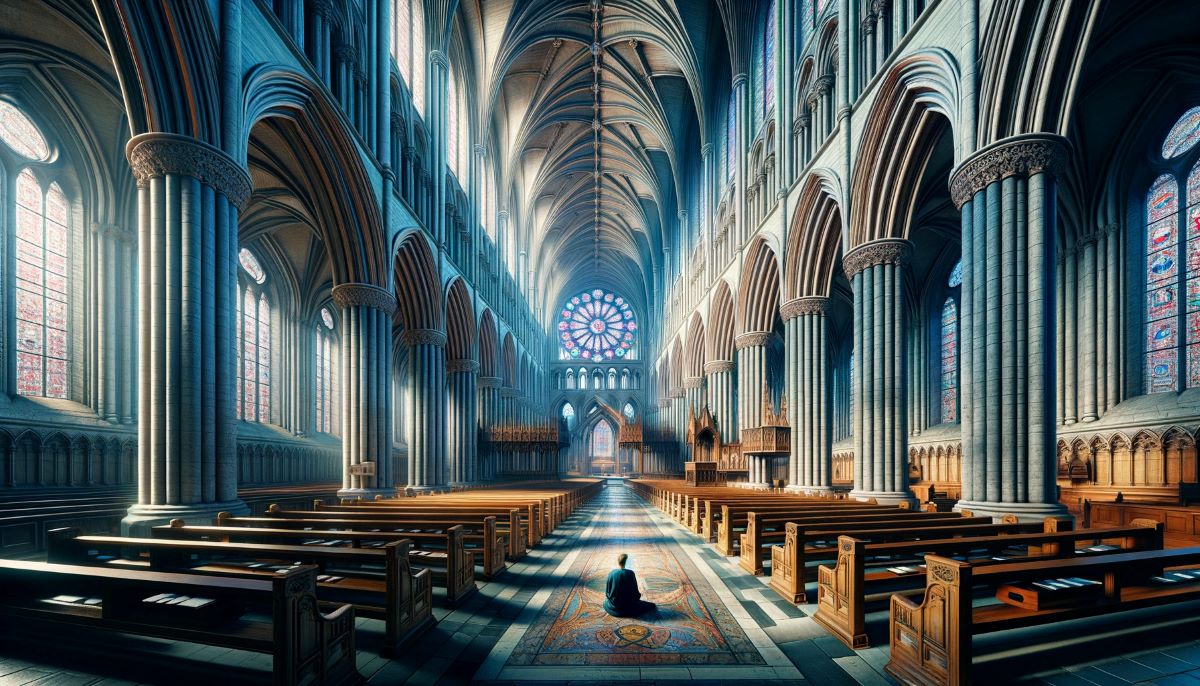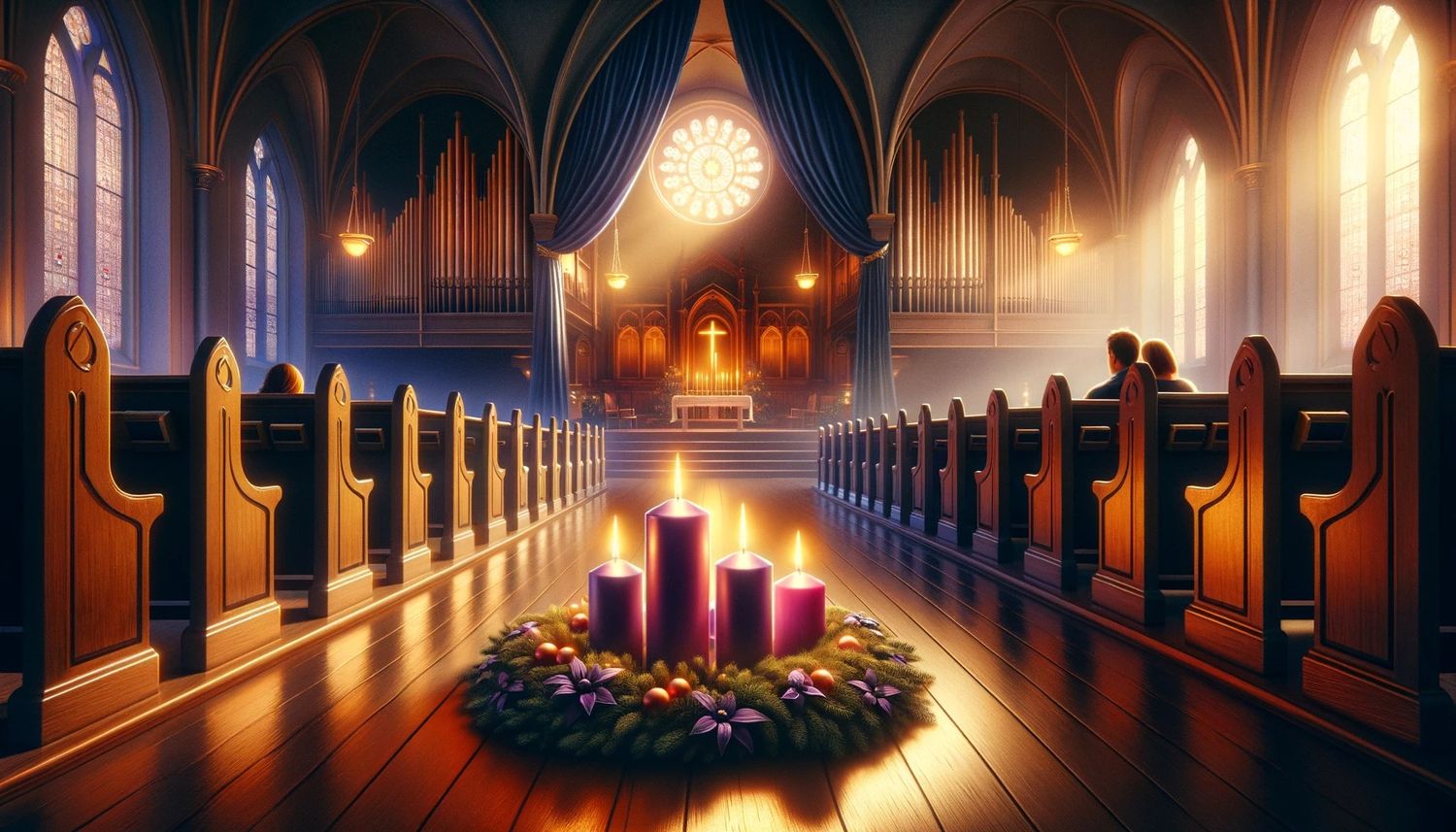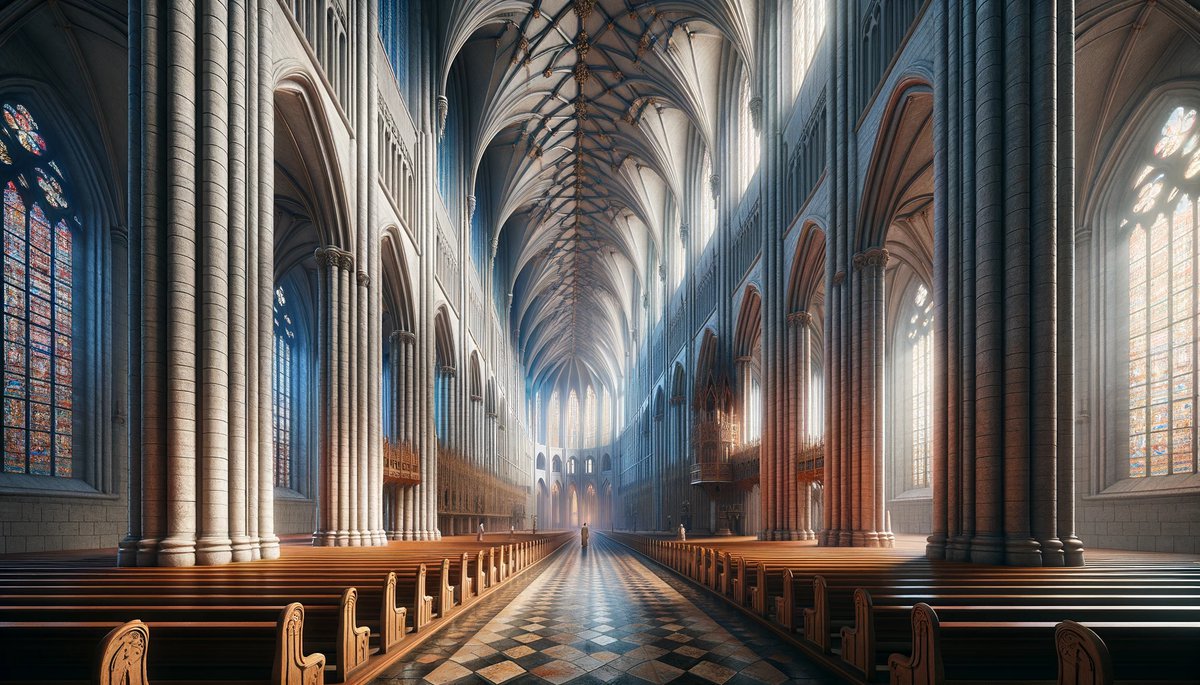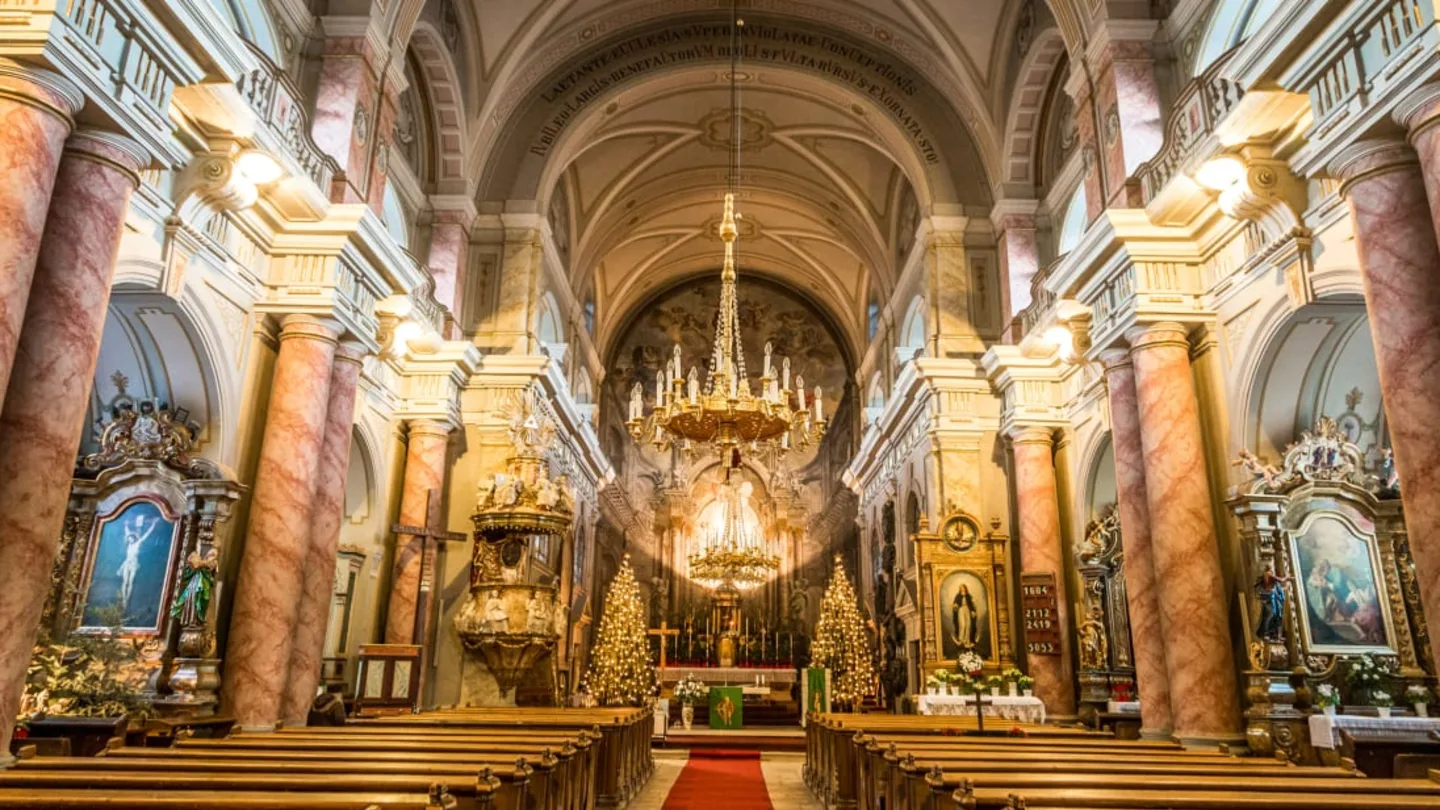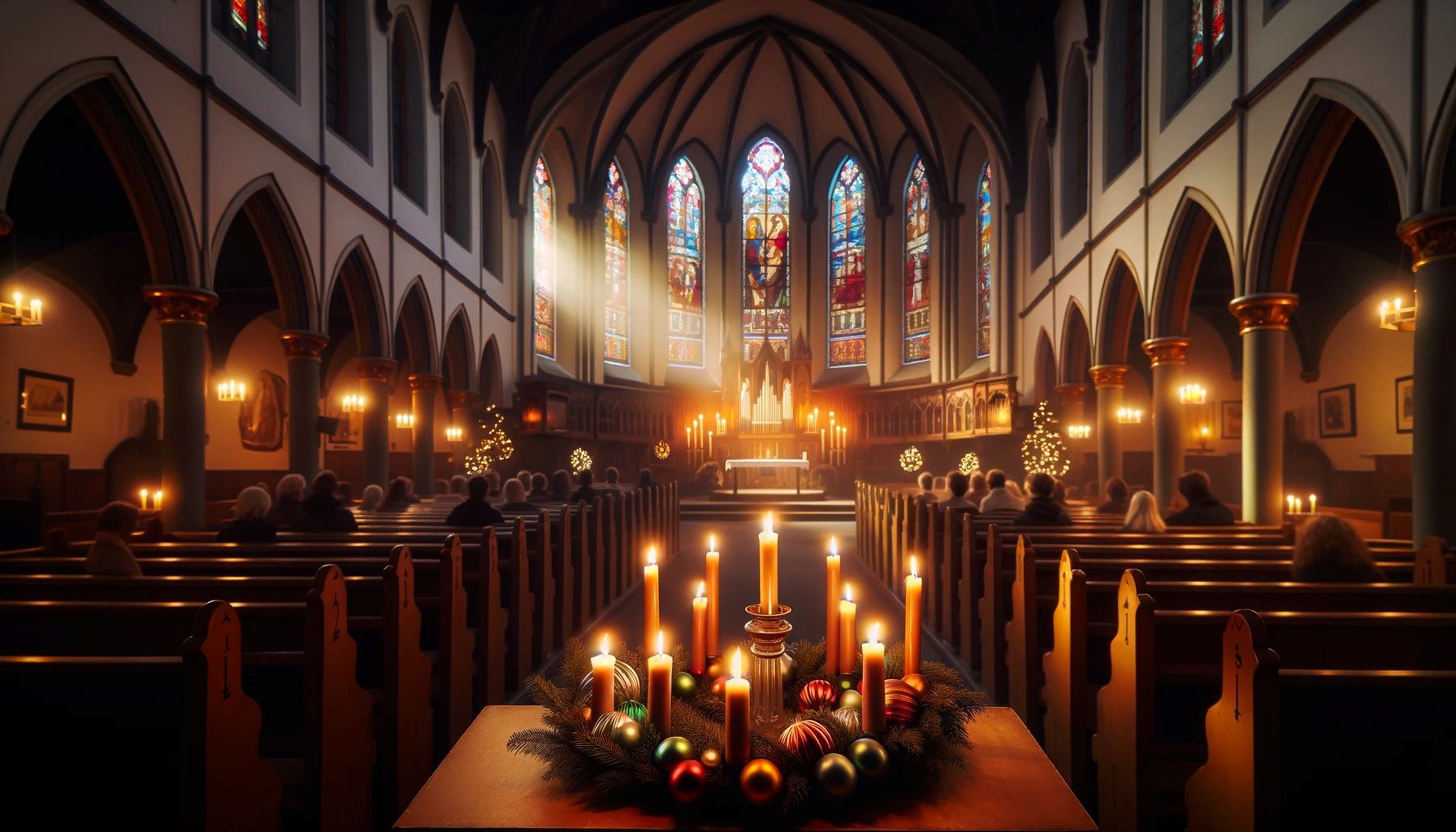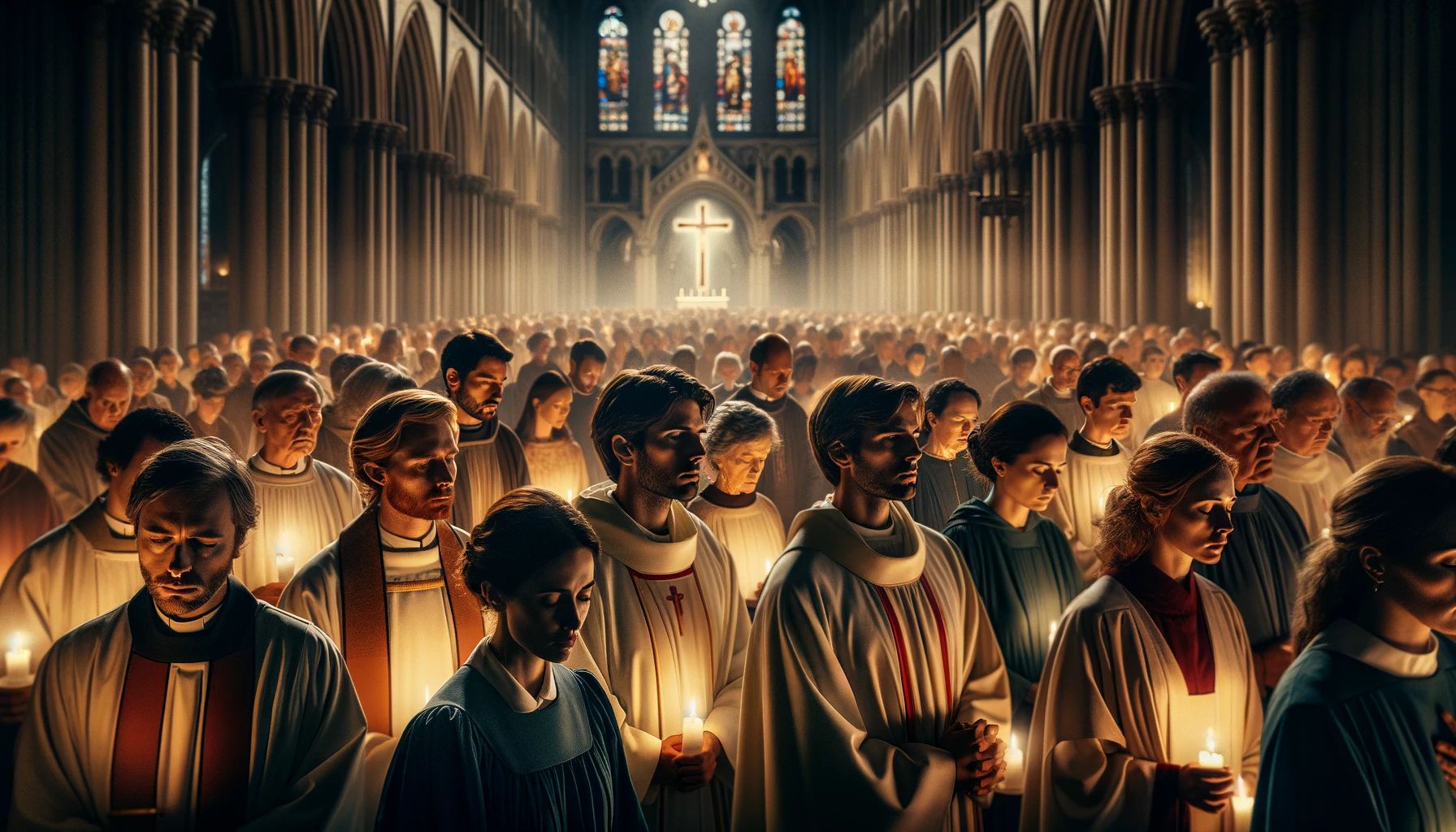Home>Arts and Culture>What Is A Co-Cathedral Church
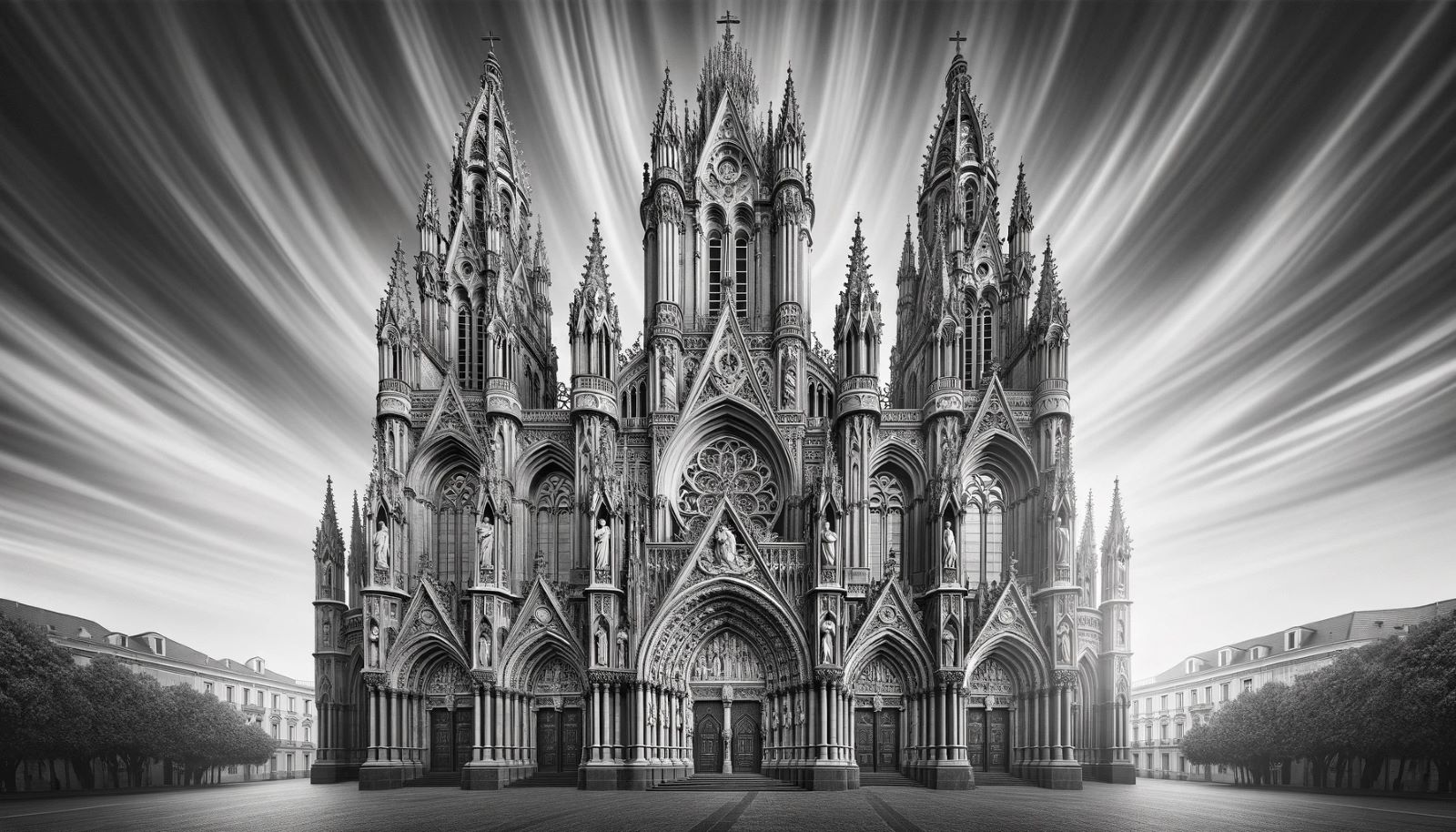

Arts and Culture
What Is A Co-Cathedral Church
Published: February 16, 2024
Peter Smith, Editorial Director at Christian.net, combines deep insights into faith, politics, and culture to lead content creation that resonates widely. Awarded for his contributions to religious discourse, he previously headed a major organization for religious communicators, enhancing dialogue on faith's societal impacts.
Discover the significance and beauty of co-cathedral churches in the world of arts and culture. Learn about their unique architectural and historical features.
(Many of the links in this article redirect to a specific reviewed product. Your purchase of these products through affiliate links helps to generate commission for Christian.net, at no extra cost. Learn more)
Table of Contents
Introduction
Co-cathedral churches stand as majestic symbols of religious and cultural significance, embodying centuries of history and architectural grandeur. These awe-inspiring structures serve as focal points for spiritual gatherings, artistic expression, and community engagement. As we delve into the world of co-cathedral churches, we will unravel the essence of these remarkable edifices, exploring their definition, historical evolution, and enduring relevance in contemporary society.
Co-cathedral churches, often shrouded in an aura of mystique and reverence, captivate the imagination with their soaring spires, intricate facades, and ornate interiors. Beyond their architectural splendor, these churches hold profound spiritual and communal significance, serving as sacred sanctuaries where individuals seek solace, inspiration, and a sense of belonging.
Join us on a captivating journey through the hallowed halls of co-cathedral churches, where history, art, and faith intertwine to create an enriching tapestry of human experience.
Read more: What Is A Cathedral Church
Definition of a Co-Cathedral Church
A co-cathedral, derived from the Latin "co-" meaning "together with," is a cathedral church that shares the bishop's seat with another cathedral within the same diocese. This unique ecclesiastical arrangement is typically found in regions with historical, cultural, or administrative significance, where the presence of two cathedrals reflects the complex dynamics of religious authority and communal identity.
Unlike a primary cathedral, which serves as the principal church of a diocese and houses the bishop's official seat, a co-cathedral shares this responsibility, signifying a shared jurisdiction and spiritual stewardship. The designation of a co-cathedral underscores the historical, administrative, or ceremonial importance of a particular city or region within the diocese, acknowledging its distinct role in the ecclesiastical landscape.
Co-cathedral churches often exhibit architectural grandeur and artistic opulence, mirroring the prestige and historical significance of the communities they serve. These magnificent edifices, with their soaring spires, intricate carvings, and resplendent interiors, stand as enduring testaments to the fusion of faith, art, and cultural heritage.
In essence, a co-cathedral church embodies the harmonious coexistence of spiritual authority, cultural heritage, and communal identity within a diocesan framework. It represents a shared spiritual home for diverse congregations, a testament to the rich tapestry of human experience woven through the fabric of religious tradition and architectural splendor.
History of Co-Cathedral Churches
The history of co-cathedral churches is deeply intertwined with the evolution of ecclesiastical governance, regional dynamics, and the cultural tapestry of diverse communities. The concept of co-cathedral churches traces its origins to the complex interplay of historical, political, and religious factors that shaped the ecclesiastical landscape over the centuries.
The emergence of co-cathedral churches can be attributed to a myriad of historical circumstances, including the expansion of dioceses, the establishment of new administrative centers, and the consolidation of religious authority. In many cases, the designation of a co-cathedral was a strategic response to the shifting tides of political power, enabling the church to assert its presence and influence in key regions while accommodating the diverse needs of growing congregations.
Throughout history, the establishment of co-cathedral churches has been linked to the rise of influential cities, the amalgamation of distinct cultural identities, and the ecclesiastical reorganization necessitated by geopolitical changes. These churches often reflect the architectural styles and artistic traditions prevalent in their respective regions, serving as living testaments to the historical, cultural, and religious narratives that have shaped local communities.
The evolution of co-cathedral churches mirrors the ebb and flow of human history, bearing witness to the triumphs and tribulations of societies across the ages. From the medieval era to the present day, these churches have endured wars, revolutions, and social transformations, standing as resilient bastions of faith, art, and heritage.
As custodians of tradition and spirituality, co-cathedral churches have adapted to the changing currents of history, embracing new forms of artistic expression, theological discourse, and community engagement. Their enduring presence serves as a poignant reminder of the enduring legacy of faith and the enduring resilience of human creativity.
In essence, the history of co-cathedral churches is a testament to the enduring vitality of religious institutions, the enduring resilience of human creativity, and the enduring resilience of human creativity. These churches stand as living embodiments of the rich tapestry of human experience, inviting visitors to embark on a captivating journey through the annals of history, art, and faith.
Purpose and Function of Co-Cathedral Churches
Co-cathedral churches serve multifaceted roles that extend beyond their religious significance, encompassing spiritual, cultural, and communal functions within the diocesan framework. These majestic edifices stand as enduring symbols of unity, diversity, and historical continuity, embodying the collective aspirations and traditions of the communities they serve.
Spiritual Center:
At the core of their existence, co-cathedral churches function as spiritual sanctuaries, providing a sacred space for worship, contemplation, and communal prayer. These hallowed halls resonate with the echoes of centuries-old rituals, hymns, and sacraments, fostering a sense of spiritual connectedness and transcendence. As centers of religious devotion, co-cathedrals offer solace, guidance, and a profound connection to the divine, nurturing the spiritual well-being of congregants and visitors alike.
Read more: What Makes A Church A Cathedral
Cultural Heritage:
Beyond their religious function, co-cathedral churches stand as custodians of cultural heritage, preserving and showcasing the artistic, architectural, and historical legacies of their respective regions. Their ornate facades, intricate stained glass windows, and majestic altars bear witness to the artistic prowess and creative expression of past generations, inviting visitors to immerse themselves in the rich tapestry of human creativity. These churches serve as living museums of art, architecture, and craftsmanship, offering a glimpse into the cultural evolution and artistic traditions that have shaped local communities.
Community Engagement:
Co-cathedral churches play a pivotal role in fostering community engagement, serving as gathering spaces for a myriad of events, including religious ceremonies, cultural celebrations, and educational programs. They provide a platform for social outreach, charitable initiatives, and interfaith dialogue, promoting a spirit of inclusivity, compassion, and solidarity within the broader community. Through their outreach efforts, co-cathedrals strive to address social issues, promote intercultural understanding, and uphold the values of compassion and service ingrained in religious teachings.
Symbol of Unity:
As co-cathedrals share the bishop's seat with another cathedral within the same diocese, they symbolize the harmonious coexistence of diverse communities and ecclesiastical traditions. Their dual role reflects the inclusive nature of the church, embracing the cultural, linguistic, and historical diversity inherent within the diocesan boundaries. Co-cathedral churches stand as unifying symbols, transcending differences and fostering a sense of collective identity and purpose among believers, regardless of their individual backgrounds.
In essence, co-cathedral churches fulfill a myriad of functions, serving as spiritual anchors, cultural repositories, community hubs, and symbols of unity within the ecclesiastical landscape. Their enduring relevance and multifaceted roles underscore their profound impact on the spiritual, cultural, and communal fabric of society, inviting visitors to partake in a rich tapestry of human experience woven through the corridors of faith and tradition.
Examples of Co-Cathedral Churches around the World
St. Mary's Pro-Cathedral, Dublin, Ireland
St. Mary's Pro-Cathedral, nestled in the heart of Dublin, stands as a testament to the enduring legacy of Catholicism in Ireland. This splendid neo-classical edifice, with its imposing Corinthian columns and graceful dome, serves as the pro-cathedral of the Archdiocese of Dublin. Its rich history and architectural grandeur draw visitors from around the world, offering a glimpse into the spiritual and cultural heritage of Ireland.
St. Joseph's Co-Cathedral, Brooklyn, New York, USA
St. Joseph's Co-Cathedral, located in the vibrant borough of Brooklyn, New York, embodies the rich diversity and religious vitality of the Catholic community in the United States. This awe-inspiring church, adorned with intricate stained glass windows and ornate altars, serves as the co-cathedral of the Diocese of Brooklyn. Its vibrant liturgical traditions and commitment to community outreach reflect the dynamic spirit of faith and inclusivity.
St. Peter's Co-Cathedral, Bologna, Italy
St. Peter's Co-Cathedral, nestled in the historic city of Bologna, Italy, stands as a masterpiece of medieval architecture and artistic splendor. This magnificent co-cathedral, adorned with exquisite frescoes and sculpted reliefs, bears witness to the enduring legacy of Catholicism in Italy. Its sacred ambiance and cultural significance make it a revered pilgrimage site for art enthusiasts and spiritual seekers alike.
St. Mary's Co-Cathedral, Sydney, Australia
St. Mary's Co-Cathedral, situated in the cosmopolitan city of Sydney, serves as a beacon of faith and cultural diversity in Australia. This striking co-cathedral, with its soaring spires and elegant Gothic revival design, reflects the enduring presence of Catholicism in the Antipodean landscape. Its vibrant community engagement initiatives and commitment to interfaith dialogue embody the inclusive spirit of the church in a multicultural society.
St. Paul's Pro-Cathedral, Valletta, Malta
St. Paul's Pro-Cathedral, nestled in the historic city of Valletta, Malta, stands as a living testament to the enduring resilience of Catholicism in the Mediterranean region. This majestic pro-cathedral, adorned with Baroque embellishments and opulent interior decor, exudes a sense of timeless grandeur and spiritual reverence. Its historical significance and architectural magnificence make it a cherished landmark for locals and visitors alike.
These exemplary co-cathedral and pro-cathedral churches, spanning continents and cultures, embody the rich tapestry of human creativity, faith, and communal identity. Each edifice stands as a living testament to the enduring legacy of Catholicism, reflecting the diverse cultural, historical, and architectural influences that have shaped local communities. Through their spiritual, cultural, and communal functions, these co-cathedral churches continue to inspire and unite believers across the globe, inviting visitors to partake in a rich tapestry of human experience woven through the corridors of faith and tradition.
Conclusion
In conclusion, co-cathedral churches stand as timeless embodiments of human creativity, faith, and communal identity, weaving a rich tapestry of spiritual, cultural, and historical narratives. These majestic edifices, with their soaring spires, intricate carvings, and resplendent interiors, serve as living testaments to the enduring legacy of Catholicism and the diverse communities it encompasses. From the historic streets of Dublin to the vibrant neighborhoods of Brooklyn, co-cathedral churches resonate with the echoes of centuries-old traditions, offering visitors a glimpse into the spiritual and cultural heritage of diverse regions.
The multifaceted roles of co-cathedral churches, as spiritual sanctuaries, cultural repositories, community hubs, and symbols of unity, underscore their profound impact on the ecclesiastical landscape and the broader societal fabric. These churches serve as beacons of faith, fostering a sense of spiritual connectedness, cultural appreciation, and communal solidarity. Their enduring relevance transcends temporal boundaries, inviting visitors to embark on a captivating journey through the annals of history, art, and faith.
As custodians of tradition and spirituality, co-cathedral churches continue to inspire and unite believers across the globe, embodying the inclusive spirit of the church and the enduring resilience of human creativity. Their architectural grandeur, historical significance, and cultural resonance make them cherished landmarks, inviting individuals of all backgrounds to partake in a rich tapestry of human experience woven through the corridors of faith and tradition.
In essence, co-cathedral churches stand as enduring symbols of unity, diversity, and historical continuity, inviting visitors to immerse themselves in the profound spiritual, cultural, and communal significance of these remarkable edifices. As we reflect on their timeless allure and multifaceted functions, we are reminded of the enduring legacy of faith, art, and heritage that transcends geographical boundaries and temporal divides. Co-cathedral churches, with their resplendent beauty and profound symbolism, continue to captivate the imagination and inspire a sense of awe and reverence, inviting individuals to partake in a shared journey through the hallowed halls of human experience.
